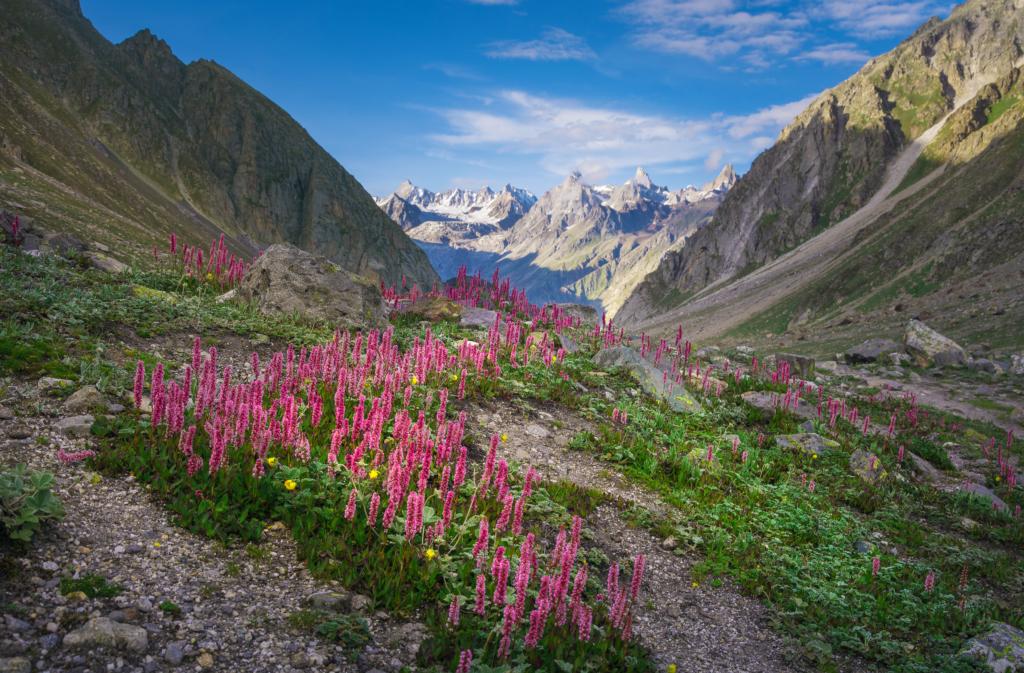They say if you sit quietly at the edge of Balu Ka Ghera just before dawn, you’ll hear the Himalayas breathe.
That’s not a metaphor.
That’s the first lesson the mountain gives you on the Hampta Pass Trek — you’re not here to conquer the trail.
You’re here to be stripped of ego, just like the shepherds and sadhus once were.
1. The Shepherds’ Hidden Route to Nowhere
Before GPS and glossy maps, Gaddi shepherds from the Kullu Valley used this pass for a strange reason: to disappear.
During summers, when monsoon floods ruined lowland pastures, they led their flocks across Hampta — not just to reach Lahaul, but to cleanse their karma.
Locals still believe that one night under the stars at Shea Goru can undo years of emotional weight. “That’s why no one cries here,” an old shepherd told me, “because the mountain has already wept for you.”
2. Hampta – Where Mountains Change Their Skin
Nowhere else in India will you see this sudden switch of landscapes:
-
One minute you’re in lush green Kullu,
-
The next, you step into the cold desert of Lahaul — barren, silent, and wild.
An old folklore from Jobra village says:
“Hampta is where the Himalayas change their robes. Green for the living, grey for the spirits.”
They believe that as you cross the pass, your spirit walks a second trail — invisible but watched. If both reach the other side together, you come back lighter, calmer, clearer.
3. Balu Ka Ghera — The Ashes of a Divine Fire?
Most trekkers sleep at Balu Ka Ghera, thinking it’s just a sandy campsite.
But do you know what “Balu” means here?
Not sand — but ashes.
Ancient nomads believe that Lord Shiva once meditated here, and the fire from his tapasya left behind black sand. Even today, some stones here smell faintly of burnt wood. Locals advise not to laugh too loudly at night here — “The ash still listens.”
4. The Wind That Teaches You Humility
As you climb toward Hampta Pass (4270m), there’s a point where the wind hits you from both sides — Kullu behind, Lahaul ahead.
It’s called “Do-Disha Hawaa” — “The Two-Direction Wind.”
Shepherds say it’s the only place where:
“You hear the mountain speak to itself.”
Many trekkers feel an eerie silence here, even in storms. Some say it’s the mountain testing your resolve. Others call it the wind’s final warning before you cross into the cold emptiness of Spiti’s edge.
5. The Crying Stream of Shea Goru
Ever heard a glacier stream weep?
At Shea Goru, early risers often hear what sounds like a woman sobbing. The stream here flows fast, yet softly.
Villagers from Chhatru believe that the stream is a daughter of the mountain, cursed to wait for travelers who never return.
Some say if you sit quietly with wet feet in the stream and speak the name of a lost loved one, you’ll dream of them that night.
6. The Silent Shrine of Chhatru
Near the final campsite, hidden behind rocks, is a tiny shrine of Lord Bholenath made only of stone and red thread.
Locals say it was built by a lost shepherd who survived a storm by taking shelter near a boulder — and saw a shadow feeding his sheep in the snowstorm.
The next morning, all his sheep were alive, untouched.
He returned the next year to build a shrine with his bare hands, and left behind his last words:
“Jisne jaan bachayi, woh chhupa nahi, woh hamare paas hi tha.”
(The one who saved me didn’t hide — he was always close.)
7. What This Trek Truly Does to You
Hampta Pass is not just a trek.
It’s a transition. A cleanse. A crossing.
It pulls you from lushness to barrenness, not just outside, but within.
Here, you lose your comfort.
Your breath gets heavier.
And strangely, your heart gets lighter.
You come back not with “content,” but with clarity.
Book the Trek with the People Who Know the Valley’s Soul
👉 Himalayan Hikers – Hampta Pass Trek
Not just a trek. A passage. A purification.
